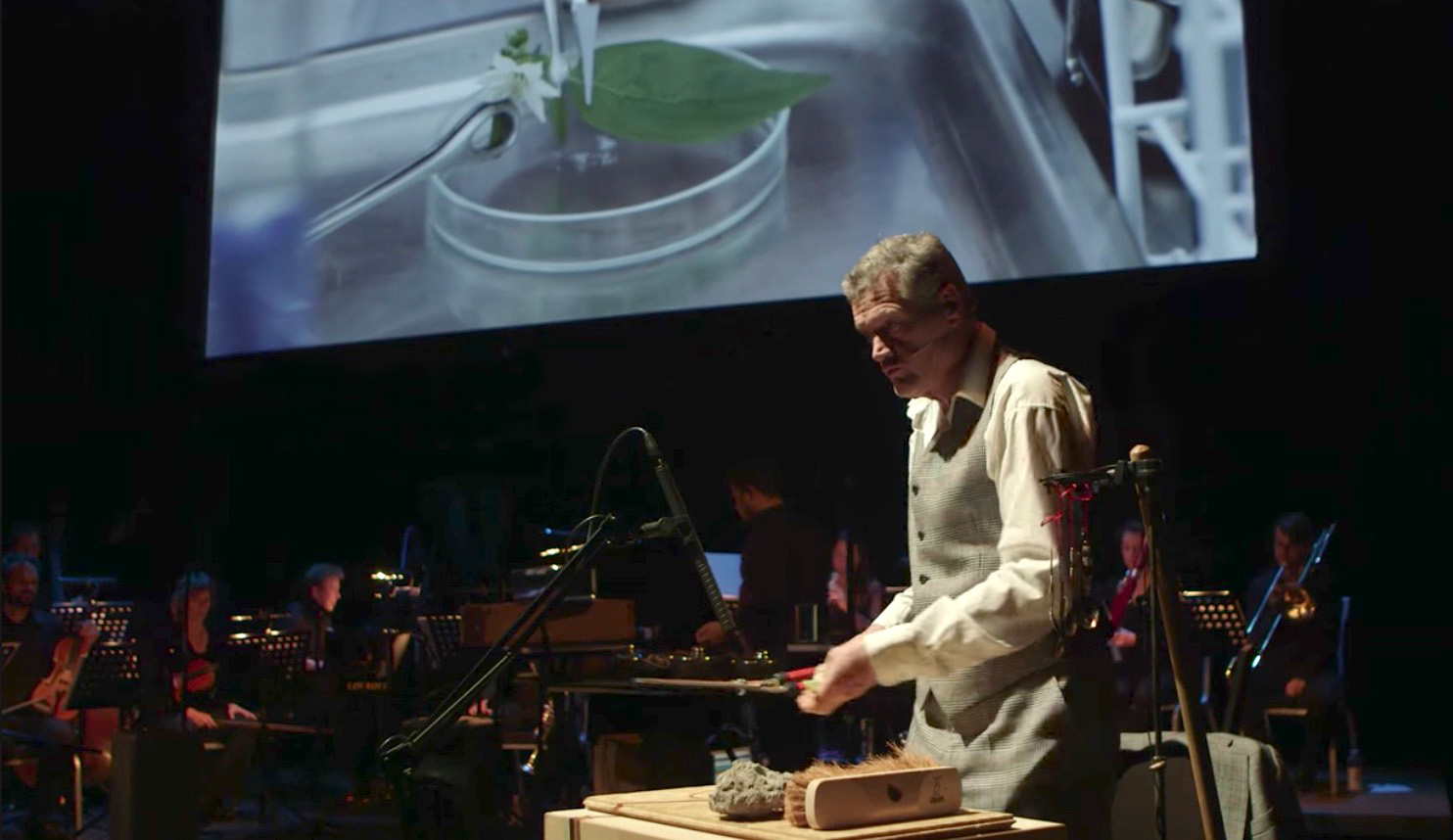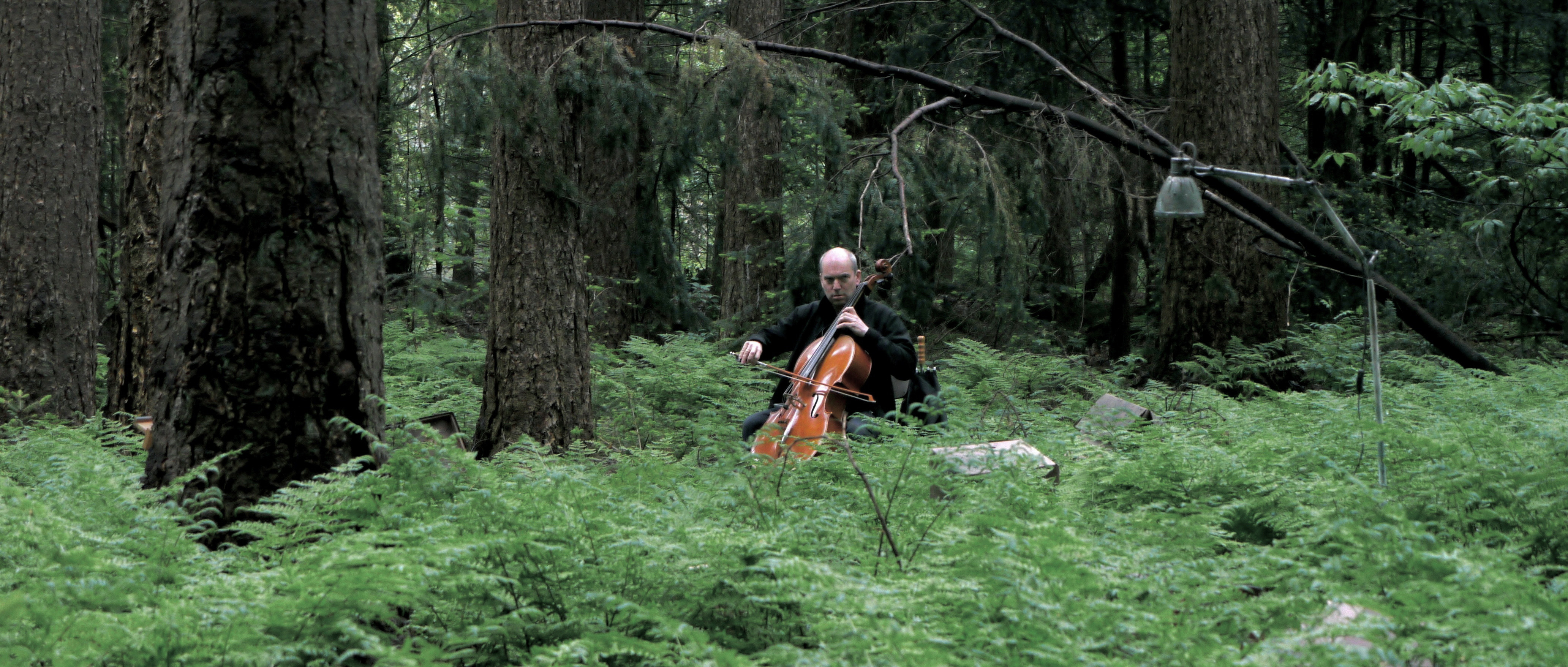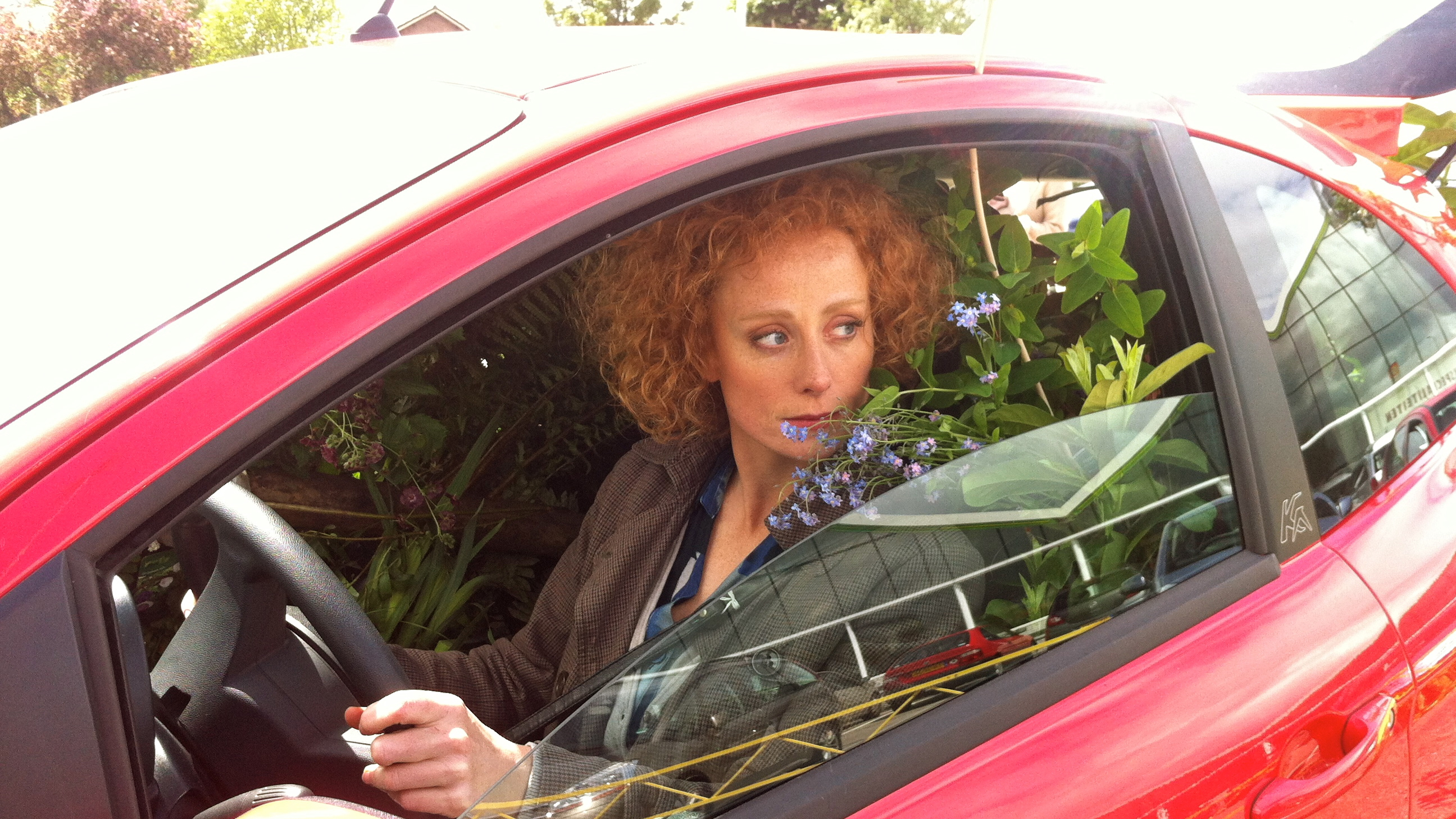composer | director
UrWald
music theatre
chamber ensemble, actor, film projection
duration: 65 minutes
composition, film, director — Arnoud Noordegraaf
scenario and screenplay — Adrian Hornsby
ensemble Nieuw Amsterdams Peil
Porgy Franssen, actor, gerauschemacher
with (on film) Sytske van der Ster, Hylke van Sprundel, Marijn Klaver, Arnica Elsendoorn
premiere: October 10, 2013 Muziekgebouw Amsterdam
official site: urwald.nl

The mind is like a forest
There is no hierarchy, no control centre.
Numberless paths branch in all directions It’s dark beneath the leaves
You can get lost ...
UrWald is a thriller about consciousness
Porgy Franssen is Narrator, Neurotic, Conductor and Foley Artist for a film that explores the most dangerous jungle of all, the human mind. It's all about losing control. Even the stylish feature-length film, that is occasionally filmed by a dog.
Porgy is the joker. He teases, he bullies, loses control over his own actions occasionally, conversing with the characters on screen. He plants ideas in their heads, provides their actions with sounds on stage and finds a way through the dense woods of their minds. Porgy leads and is lead by the film, the score, his characters, his sounds, himself.
UrWald is a narrative on the verge of chaos. Where consciousness struggles with a story that is telling itself. While we progress into the UrWald, we go deeper into the woods, into the voice, into the story.

If cognitive science were to state just one idea, it would probably be: neuroplasticity. Brains, it turns out, are remarkably malleable in what they do and think, and keep changing. And as the brain changes, so too does the mind, and the self. People are not fixed entities, but rather live through a succession of different selves. What we hold onto instead is the story that threads these selves together. We are the story we tell our selves.
But stories can have a peculiar power of their own. Sometimes a story almost wants
to be told in a certain way — in spite of our selves. As though the story were telling its self, and we merely playing along. As though there were a narrator’s voice telling us.
In a forest, every branch is different from every other, and every tree a life form of its own, changing and developing according
to its own logic. But greater movements move through the forest, and it thinks in a sense as one.
As we struggle to order the realities in which we live, we are searching for these threads and unifying movements, these narrative coherencies. We are, on a daily basis, transforming the chaotic experience of being into the coherent story of an I. But what if the thread unwinds, or the movement gets lost, or cut off? What if the story is taking you to somewhere in the forest you don’t want to be, and where you no longer recognise the path?
UrWald takes place along the borders where narratives struggle with chaos, and where consciousness struggles with the narratives that speak it. As we go deeper into the UrWald, we go deeper into the forest, the voice, the story.

Aaron and Hélène live in a consummately well- ordered reality. Aaron is an agronomist in a commercial greenhouse. He monitors nature minutely. He injects the artificial soil with nutrients. He clips the plants with a pair of surgical scissors, and they make taut, brittle snips.
Hélène teaches art in a primary school. Her class is seated around a small potted willow, which the children are painting. A brush runs smoothly up and down the paper to form a chocoloate-brown trunk. But a little girl becomes frustrated: she presses down hard and breaks her brush, provoking a sudden nosebleed.
Aaron emerges into the car park to find someone has defiled his car. Why? What has he done? Somewhere else, a catastrophic crash in a forest suggests something appalling has taken place. Its echo reverberates as both Aaron and Hélène start to experience — or almost suffer — a series of flashbacks.
The progression of the day, and the increasing intensity of the flashbacks, start to build a story. For the audience watching, as much as for Aaron and Hélène, this is a process of composition — a searching out of who they are, and of what their memories both cover and reveal.
They used to live in a different apartment. There were problems with a neighbour upstairs — odd noises, obsessions. He was always dragging plants up the stairs. The apartment where they live now is white and bare. They haven’t unpacked. He didn’t seem to have a coherent narrative, a single voice. There was a profusion of nature. In the bare living room of today, Hélène starts to distribute plants and flowers, reconstructing the scene of Millais’ Ophelia. A voice seems to be coming up through her mouth ...
As more memories rise and flood their consciousnesses, their initial reality starts to fail. Order becomes untenable, and a forest grows wild through everything. The forest is at once the completion of their story, and its ultimate disintegration. In the forest there are no selves, no stories, no narratives: only trees growing and swaying. The forest is endlessly changing, and endlessly and forever a forest.

UrWald is a feature length music theatre work for ensemble, film and live actor, commissioned by New Amsterdams Peil.
The music, or rather the one-on-
one combination of composition and scenario writing, introduces a new and unprecedented style. Tempo and timbre- changes are reflected in the film scenes, and vice versa: for example, the clipping of stems in the greenhouse cuts sudden pauses into the music; the sound of blood drops falling on the school corridor becomes the pulse for the composition. Every ingredient is connected to the music, and derives its dramatic power from it.
In UrWald Noordegraaf combines multiple media in a single larger whole, creating a language and style still in its pioneer phase. The composition opens with a virtuoso piano solo, with complex rhythms propelling forwards without rest. The ensemble counters with hard, vertical stabs; an abundance of bundled energy hitting back against the soloist. As piano and ensemble start interacting more, the composition is rudely interrupted by a violin solo, musically voicing the heart of Hélène. The instrument takes the ensemble in its wake and develops a new idiom of rhythmical complexity and harmonic beauty. Eventually the piano returns, duetting, intertwining, and making love to the violin.
And always present, both as a narrative force and a compositional element, is the voice of the live actor on stage. Playing the Narrator, he has an urtext running through the interior of the film like an underground river. In one sense it is inside the characters, but more the characters are immersed within it, as it sweeps forward carrying their story, and ultimately subsuming it. At the same time the text is equally part of the composition, with his words serving, alongside the violin and piano, variously to pick up the musical pace, pause, and playfully tease and disrupt the rhythm.
The actor has a further and highly original role as an on stage foley artist. He creates sound elements (the clippings, the blood drips etc.) for the film scenes live as we are watching them, and as they integrate with the composition. Thus he weaves between the ensemble and on screen worlds, connecting the points of the full artistic universe.
(text AH 2013)